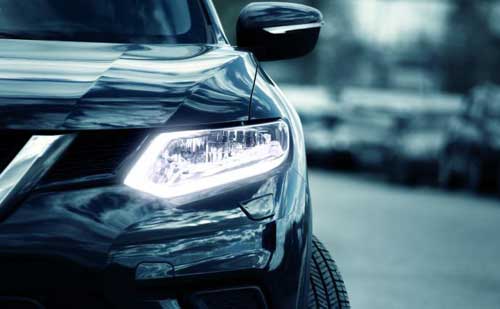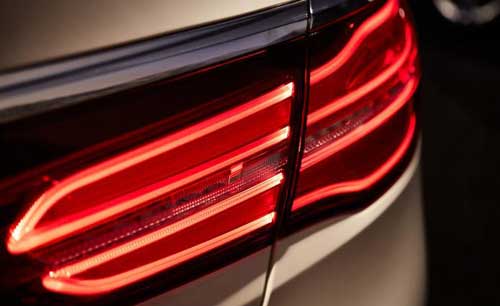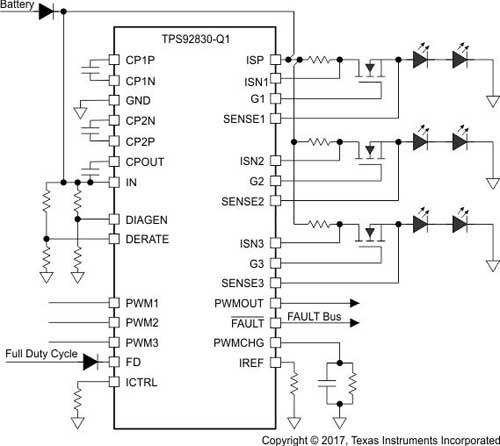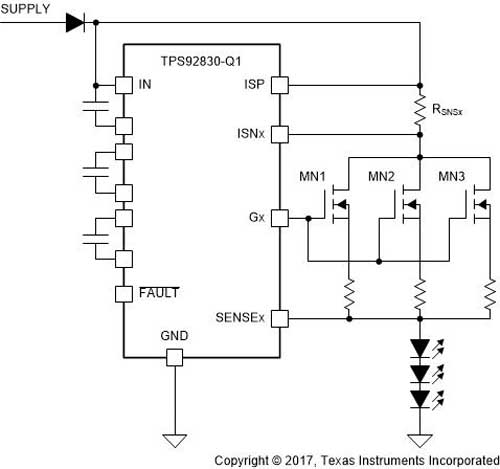Automotive lighting technology has evolved over the decades. In the era of light-emitting diode (LED) lighting, expectations for integrated light design have never been so high. Because of this, these high expectations are driving the development of LED driver technology in the semiconductor industry. Today, automotive lighting requires a high-quality, balanced design to ensure superior lighting in both headlights and taillights.
This article refers to the address: http://


Figure 1: Car headlights and taillights
In the past, the way to increase brightness was to increase the number of LED lights. But if you open a new taillight now, you'll see plenty of light-guiding materials, light pipes, hoods, and other complex lighting structures for better lighting. In order to implement the above measures, it is necessary to reduce the number of LED lamps and increase the current of each LED lamp.
Designers use switched LED drivers to increase the current of each LED. However, in the rear-end combination lamp (RCL), high switching frequencies can cause significant interference to the antenna, causing electromagnetic interference (EMI) and electromagnetic compatibility (EMC) problems. When using a linear LED driver, the high power consumption inside the LED driver can affect the life of the entire lamp.
TI's new three-channel high-side constant current automotive linear LED controller can help solve these problems. Figure 1 is a schematic diagram of the device TPS92830-Q1.

Figure 2: Simplified schematic of the TPS92830-Q1
TI removed the metal-oxide-semiconductor field-effect transistor (MOSFET) inside the device so that the designer can determine the type of MOSFET needed for the entire RCL system based on the actual output current. In this way, designers can design more sophisticated taillights: by using one or two TPS92830-Q1 combined with an external high-current MOSFET to provide up to 250mA or 300mA per channel.
This innovation also releases the heat of the device itself and optimizes the thermal performance of the entire system. With this innovation, you can use the TPS92830-Q1 to drive brake lights, tail lights, turn signals, position lights, and daytime running lights (DRL). It depends on how large the external MOSFET is needed for your design.

Figure 3: MOSFET Parallel Drive Support
At the same time, the TPS92830-Q1 also integrates a high-precision on-chip pulse width modulation (PWM) generator. The error is leading the industry, as low as 2%, and high-quality balanced design can be achieved on each lamp, especially for the design of lamps installed on the trunk and fender. The difference in brightness between the two lamps cannot be distinguished by the naked eye. You can choose between an on-chip PWM signal and an external PWM signal depending on the system architecture.
The device's comprehensive leading-edge protection and detection capabilities ensure that your design meets all automotive OEM requirements, such as LED open circuits, LED shorts, and a single failure. The TPS92830-Q1 also supports current derating to protect external MOSFETs under high voltage input conditions, ensuring system reliability.
Suizhou simi intelligent technology development co., LTD , https://www.msmsmart.com